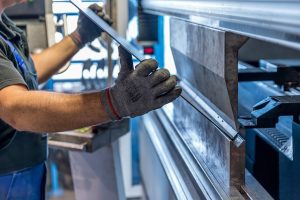
Stainless steel is one of the world’s most popular materials. It’s used to make everything from cookware and furniture to structural building frames, bridges, engines and more.
According to Statista, global production of stainless steel has more than doubled since 2005, attesting to its popularity. Unless you’re familiar with the properties of stainless steel, though, you might be wondering why it doesn’t rust.
The Basics of Stainless Steel
Stainless steel is an iron alloy with a chromium content of at least 11%. Like all metal alloys, it’s a combination of multiple metals. Stainless steel specifically contains iron as its main metal. In addition to iron, stainless steel contains chromium — as well as other metals and/or non-metallic elements — but in a smaller concentration.
Some of the most common types of stainless steel include the following:
- Type 304
- Type 316
- 316F
- 316H
- 316N
- Duplex
- Ferritic
- Austenitic
- 440C
The Rustproof Properties of Stainless Steel
Stainless steel doesn’t rust because it contains chromium. Stainless steel is produced using iron and chromium. Plain iron is susceptible to rust due to oxidation. Oxidation will convert iron into iron oxide, which is essentially rust. Chromoim prevents this from happening by forming a protective shield over the iron.
The chromium in stainless steel allows for the formation of a protective layer. When exposed to oxygen, chromium will undergo chemical changes. The chromium on the surface of a stainless steel product will begin to oxidize. Chromium oxidation, however, doesn’t create iron oxide. Rather, it creates a protective layer that shields the underlying iron.
Other Ways to Protect Stainless Steel From Corrosion
The primary way in which stainless steel protects against corrosion is by leveraging chromium. All grades and types of stainless steel contain chromium. Exposure to oxygen in the air will result in the formation of a protective layer over the stainless steel product.
The higher the chromium content in stainless steel, the better the protection against corrosion. At a minimum, stainless steel is comprised of 11% chromium. Using a higher concentration of chromium, though, will increase its level of protection against corrosion.
Nickel can be added to stainless steel to further protect it from corrosion. Nickel works in a similar way as chromium. When exposed to oxygen, it will under a chemical change. Nickel will turn into nickel oxide, which will seal the stainless steel product. Using at least 8% nickel in stainless steel will protect it from corrosion.
